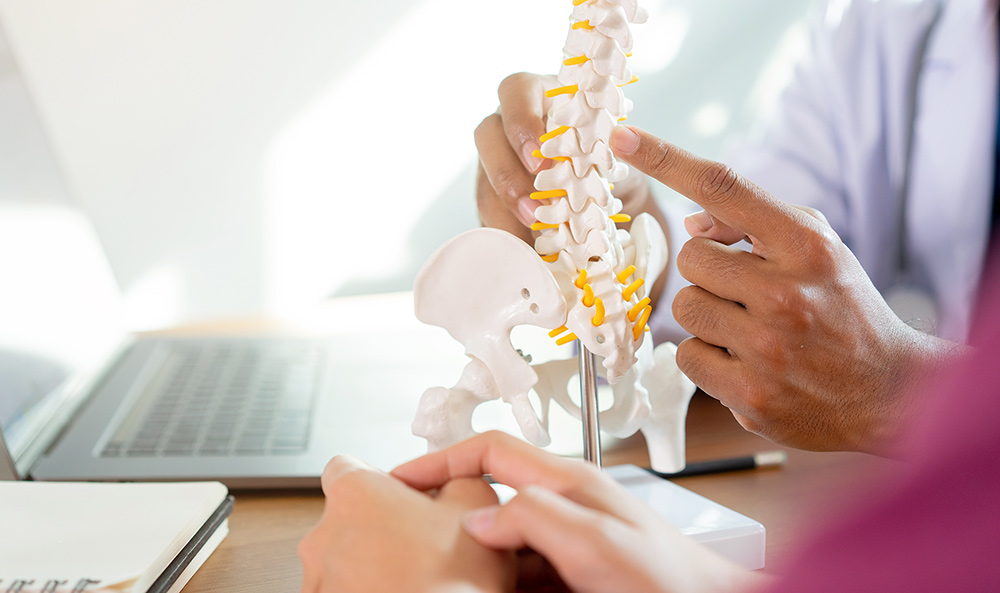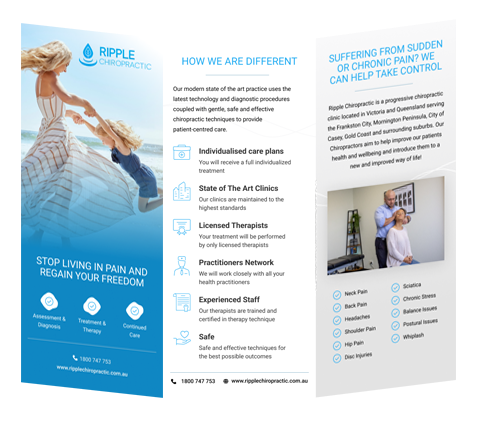What Does A Chiropractor Do?
Last updated on February 26, 2024

In Australia, chiropractors play a vital role in the healthcare system, focusing on the diagnosis, treatment, and prevention of mechanical disorders of the musculoskeletal system, especially the spine. Their approach emphasises manual therapy, including spinal adjustments and manipulations, to improve patient health. Read on to find out all you need to know about ‘What does a chiropractor do?’
Table of Contents
ToggleEducation and Training
Becoming a chiropractor in Australia requires extensive education and training. Prospective chiropractors must complete a 5-year university programme accredited by the Chiropractic Board of Australia. This rigorous curriculum covers anatomy, physiology, pathology, and chiropractic techniques, ensuring practitioners are well-equipped to provide safe and effective chiropractic care.
Core Responsibilities and Skills
Chiropractors possess a unique set of responsibilities and skills centred on enhancing the body’s natural healing abilities. They are adept at performing chiropractic adjustments to correct spinal misalignments, which can relieve pain and improve function. Besides manual adjustments, their core skills include patient assessment, diagnosis, and the provision of lifestyle advice to support overall well-being.

The Chiropractic Consultation Process
The chiropractic consultation process is a critical step in ensuring that patients receive personalised and effective care. It involves a thorough evaluation to understand the patient’s specific health concerns and to develop a tailored treatment plan.
Initial Assessment and Diagnosis
The initial consultation typically involves a detailed discussion of the patient’s medical history and a physical examination, focusing on the spine and posture. Chiropractors may also use diagnostic imaging to gain a clearer understanding of the patient’s condition, which aids in crafting a precise diagnosis and treatment strategy.
Developing a Customised Treatment Plan
Based on the initial assessment, chiropractors in Australia devise a customised treatment plan that may include spinal adjustments, soft tissue therapy, and exercises. This plan is tailored to address the individual’s specific needs, aiming to reduce pain, restore function, and prevent recurrence.
Follow-Up and Preventative Care
Follow-up visits allow the chiropractor to monitor progress and adjust the treatment plan as necessary. Preventative care, including lifestyle and dietary advice, is also provided to promote long-term health and prevent future issues.

Common Treatments and Techniques
Chiropractors utilise a variety of treatments and techniques to address a wide range of conditions, focusing on restoring balance and function to the spine and nervous system.
Spinal Manipulation and Adjustment
Spinal manipulation, a cornerstone of chiropractic treatment, involves applying a controlled force to joints that have become restricted in their movement. This technique helps to restore mobility, relieve muscle pain, and improve nervous system function, contributing to overall health and well-being.
Soft Tissue Therapy
Soft tissue therapy is used to treat muscle and connective tissue problems. Techniques such as massage and trigger point therapy can help relieve muscle pain, reduce inflammation, and improve range of motion, complementing the effects of spinal adjustments.
Exercises and Health Plans
Chiropractors often prescribe specific exercises to strengthen the muscles around the spine, improve posture, and enhance mobility. Health plans may also include healthy eating and lifestyle advice to support the patient’s recovery and prevent future issues.

Conditions Treated by Chiropractors
Chiropractors in Australia are known for their expertise in treating a variety of conditions related to the musculoskeletal system.
Back and Neck Pain
Chiropractic adjustments are particularly effective for relieving back and neck pain, common issues that many people face. By correcting spinal alignment, these treatments can reduce pain, increase range of motion, and improve quality of life.
Headaches and Migraines
Chiropractic care can also be beneficial for headaches and migraines, especially those linked to musculoskeletal issues. Adjustments can help reduce the frequency and intensity of headaches by alleviating tension and improving spinal health.
Chronic Pain Management
For individuals suffering from chronic pain conditions, such as chronic low back pain, chiropractic therapy offers a non-invasive option to reduce pain and improve functionality. Through a combination of adjustments, soft tissue therapy, and rehabilitative exercises, chiropractors help patients manage chronic pain and improve their quality of life.
How to schedule an appointment
If you’d like to book an initial consultation you can give us a call on (03) 9864 1819 or you can fill out our online booking form.
FAQ’s
If you have any further inquiries about the role of chiropractors and the services they provide, please feel free to contact us today. In the meantime, you can explore our FAQs below, which may offer you the precise information you’re seeking regarding ‘What does a chiropractor do?’
How do I know if I need a chiropractor?
If you find yourself dealing with ongoing discomfort, a decreased range of motion, or pain in your back, neck, or extremities, it might be time to consider chiropractic treatments. Chiropractors are adept at diagnosing such conditions and devising a treatment strategy focused on pain relief and functional improvement.
Is chiropractic care safe for pregnant women?
For expectant mothers, chiropractic care is widely regarded as a safe option for alleviating pregnancy-related back discomfort and other musculoskeletal pains. It’s crucial, though, to seek advice from both your healthcare provider and a chiropractor who specialises in prenatal care before embarking on any chiropractic manipulation.
Can chiropractors treat sports injuries?
Chiropractic manipulation is a key resource for athletes facing sports-related injuries. By integrating chiropractic adjustments with soft tissue treatments and tailored exercise regimens, chiropractors facilitate the healing process, boost athletic performance, and mitigate the risk of further injuries. People often seek chiropractic adjustment not just for recovery but also for the preventative benefits it offers in maintaining optimal physical health.


